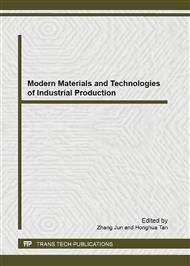p.543
p.547
p.552
p.558
p.564
p.569
p.575
p.581
p.587
Using the Nearest Neighbor Algorithm to Build a Web-Based Recommender System for House Trading and Matching
Abstract:
This paper is to present one of the techniques of data mining called the nearest neighbor algorithm to build a web-based recommender system for house trading and matching. The nearest neighbor algorithm is a pragmatic and highly accurate algorithm and can be used in the recommender system. Its use could enhance the systems matching ability so that users can easily obtain the information they need. This system offers a better way to get beyond the disadvantages of the traditional conditional or Boolean method that real estate agencies use to search for appropriate houses. Through improving the traditional but inefficient approach to searching, users will not waste much time without getting useful information or good offers of real estate.
Info:
Periodical:
Pages:
564-568
Citation:
Online since:
September 2013
Authors:
Price:
Сopyright:
© 2013 Trans Tech Publications Ltd. All Rights Reserved
Share:
Citation:


